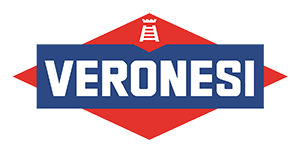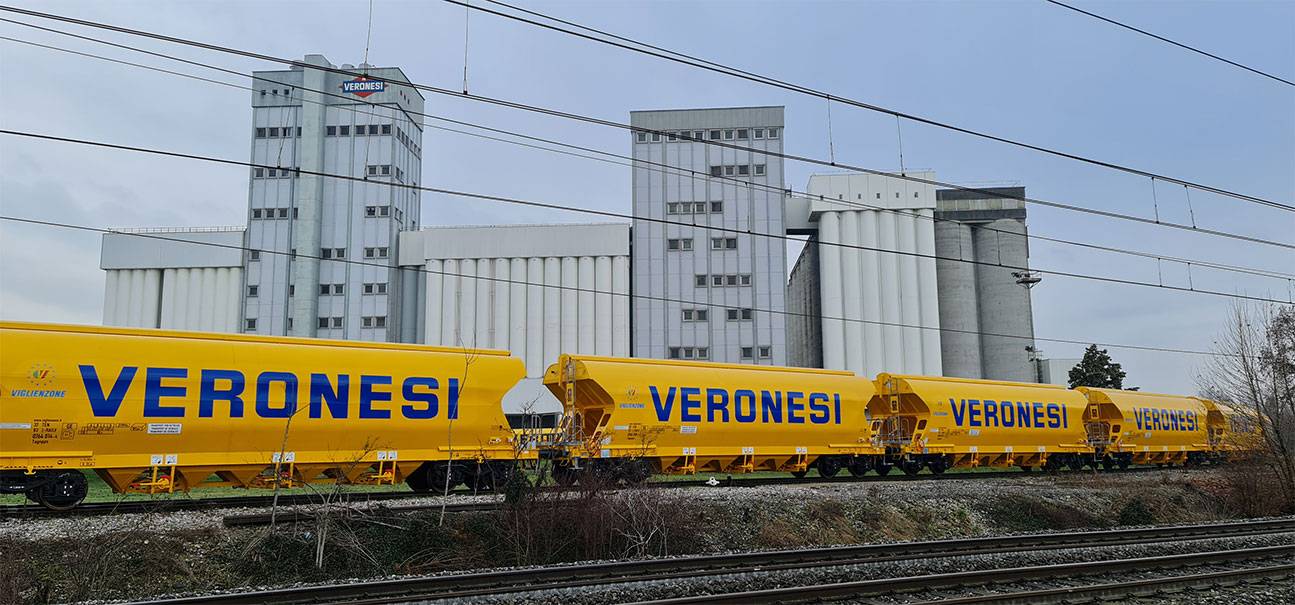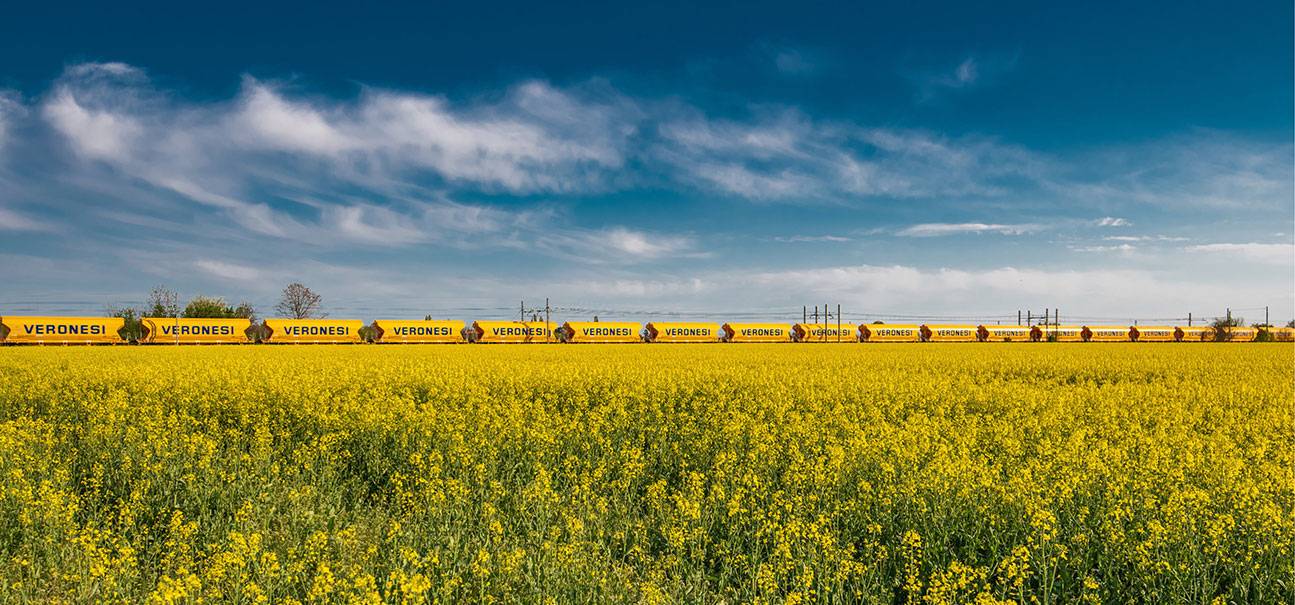Veronesi Supertrain, our yellow branding runs on rails
With the aim of further increasing the sustainability of the supply chain for raw materials, which is the first link in our production process, we have developed an important rail project with the creation of the “Veronesi Supertrain”. With a total weight of 2,500 tonnes and its wagons (all painted in yellow Veronesi livery!), this train can transport the equivalent of the content of 75 lorries and produces eighty per cent less carbon dioxide than a similar amount moved by road.
A journey along the road to sustainability
The “Veronesi Supertrain” project plays an essential role in the evolution of the supply chain for raw materials in terms of sustainability and efficiency. We are proud to be the first in the sector to deploy this approach, one which we are sure we will consolidate in the future with the aim of further reducing our environmental impact. The “Supertrain” allows us to transport double the quantity normally carried by traditional trains, while at the same time reducing emissions in food logistics.
This project meets the Sustainable Development Goals which form the Agenda 2030 agreed by the governments of the United Nations member countries. Specifically, it involves goals for “Affordable and Clean Energy”, “Decent Work and Economic Growth”, “Industry, Innovation and Infrastructure”, “Sustainable Cities and Communities”, “Responsible Consumption and Production”, “Climate Action” and “Partnership for the Goals”.
From road to rail
Given the transportation volumes that the production of feed requires, over recent years Veronesi has adopted a more environmentally sustainable policy with a progressive reduction in road usage in favour of rail transport. The firm has reduced its use of road transport from 90% in 1998 to 72% currently, thus emphasising the use of rail, which now represents 28% of the total. That has meant that 30,000 lorryloads have been eliminated, saving 17,500 tonnes of CO2 emissions.
It is the result of years of work, during which Veronesi has deployed a fleet of over one hundred railway wagons, making up trains that weigh 2,200 tonnes and are 400 metres long. In 2020, for the first time, a train with a towable weight of 2,500 tonnes was used (a load equivalent to 75 lorries): it has been called the “Veronesi Supertrain”.
Next stop: feed mill
Thanks to inspired thinking from its founder, Apollinare Veronesi, as many as four out of Veronesi seven feed mills are linked to the network and can accept rail deliveries; this is unique in Italy in the food production sector. The facilities in San Pietro in Gu (province of Padua), Acquanegra Cremonese (Cremona), San Polo di Torrile (Parma) and Fossano (Cuneo) can be supplied by rail directly from the producing countries, or from ports where material is warehoused, with either one or three trains per week according to the location.
Not just the Supertrain.
Sustainability in logistics is also achieved through the use of intermodal transport, both by rail and sea (the so-called “highways of the sea”). In the road transport area, our commitment to reduce environmental impact also shows itself in the use of vehicles powered by liquid methane: in this case, nitric oxide emissions are reduced by 70%, particulates by 99% and CO2 by 15% compared with an equivalent diesel engine.


